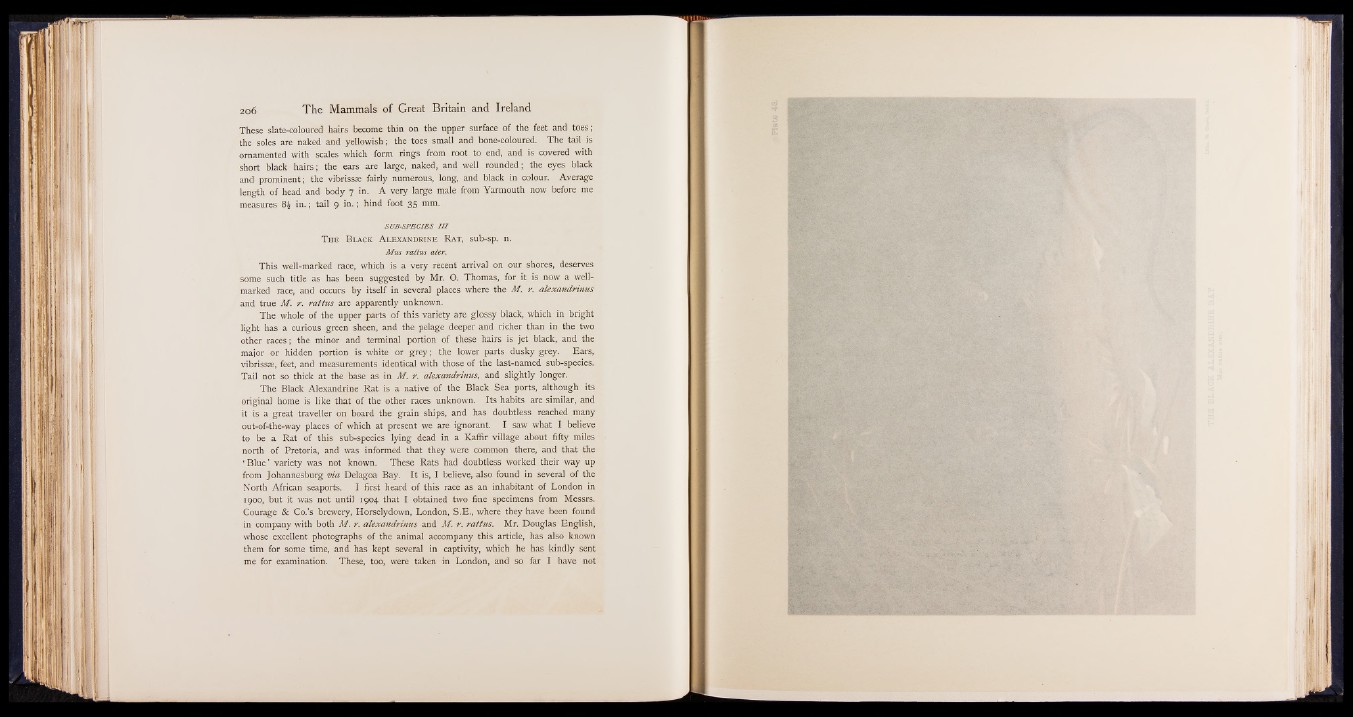
These slate-coloured hairs become thin on the upper surface of the feet and toes;
the soles are naked and yellowish; the toes small and bone-coloured. The tail is
ornamented with scales which form rings from root to end, and is covered with
short black hairs; the ears are large, naked, and well rounded; the eyes, black
and prominent; the vibrissa fairly numerous, long, and black in colour. Average
length of head and body 7 in. A very large male from Yarmouth now before me
measures 8$ in .; tail 9 in .; hind foot 35 mm.
SU B -SP E C IE S i l l
T he B lack A lexandrine R at, sub-sp. n.
Mus rattus ater.
This well-marked race, which is a very recent arrival on our shores, deserves
some such title as has been suggested by Mr. O. Thomas, for it is now a well-
marked race, and occurs by itself in several places where the M. r. alexandrinus
and true M . r. rattus are apparently unknown.
The whole of the upper parts of this variety are glossy black, which in bright
light has a curious green sheen, and the pelage deeper and richer than in the two
other races; the minor and terminal portion of these hairs is jet black, and the
major or hidden portion is white or g re y; the lower parts dusky grey. Ears,
vibrissae, feet, and measurements identical with those of the last-named sub-species.
Tail not so thick at the base as in M. r. alexandrinus, and slightly longer.
The Black Alexandrine Rat is a native of the Black Sea ports, although its
original home is like that of the other races unknown. Its habits are similar, and
it is a great traveller on board the grain ships, and has doubtless reached many
out-of-the-way places of which at present we are ignorant. I saw what I believe
to be a Rat of this sub-species lying dead in a Kaffir village about fifty miles
north of Pretoria, and was informed that they were common there, and that the
‘ Blue ’ variety was not known. These Rats had doubtless worked their way up
from Johannesburg v ia Delagoa Bay. It is, I believe, also found in several of the
North African seaports. I first heard of this race as an inhabitant of London in
1900, but it was not until 1904 that I obtained two fine specimens from Messrs.
Courage & Co.’s brewery, Horselydown, London, S.E ., where they have been found
in company with both M. r. alexandrinus and M. r. rattus. Mr. Douglas English,
whose excellent photographs of the animal accompany this article, has also known
them for some time, and has kept several in captivity, which he has kindly sent
me for examination. These, too, were taken in London, and so far I have not